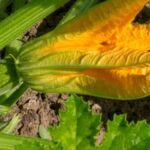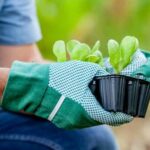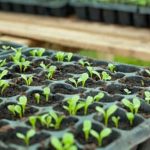Are you interested in learning about container vegetable gardening? Look no further. This article will provide you with valuable insights and information on how to grow your own fresh produce in containers. And the best part is, you can also access a free audio book on container vegetable gardening to enhance your knowledge and skills in this area.
Container vegetable gardening is a versatile and practical way to cultivate fruits and vegetables, especially for those with limited space or mobility. Whether you have a small balcony, patio, or even just a sunny windowsill, container gardening allows anyone to enjoy the benefits of homegrown produce. By using containers, you can easily control factors like soil quality, drainage, and sunlight exposure to create an optimal growing environment for your plants.
In this guide, we will explore the various benefits of growing vegetables in containers, from increased accessibility and flexibility to better pest control and maintenance. We will also discuss how to choose the right containers for your garden, select the best vegetables for container gardening, and gather essential tools and supplies to ensure successful growth.
Additionally, we will provide a step-by-step guide on setting up your own container vegetable garden and offer tips on maintaining and caring for your plants throughout the growing season.
Benefits of Growing Vegetables in Containers
Growing vegetables in containers offers numerous benefits, making it an attractive option for gardeners of all levels. Here are some advantages to consider when deciding to start a container vegetable garden:
- Space Efficiency: Container gardening is ideal for those with limited outdoor space or no access to a traditional garden plot. You can place containers on balconies, patios, or even windowsills, allowing you to grow fresh produce in small areas.
- Portability: Containers can be easily moved around, which is especially useful if you need to adjust the amount of sunlight your plants receive or protect them from harsh weather conditions.
- Weed and Pest Control: Container gardening helps reduce the risk of weeds invading your garden bed and makes it easier to monitor and control pests that may damage your plants.
Another benefit of growing vegetables in containers is the ability to extend the growing season. By moving containers indoors during colder months or covering them with cloches or row covers, you can protect your plants from frost and continue harvesting fresh vegetables year-round. Plus, container gardening allows for more controlled growing conditions, such as soil composition and moisture levels, leading to healthier plants and higher yields.
Whether you’re a beginner looking to try your hand at gardening or an experienced grower seeking a new challenge, container vegetable gardening offers a versatile and rewarding way to cultivate your own fresh produce. Take advantage of the flexibility and convenience that containers provide by starting your own container garden today.
Don’t forget to explore resources that offer valuable information and guidance on container gardening, such as the aforementioned keyword for a free audio book on container vegetable gardening.
Choosing the Right Containers for Container Vegetable Gardening
When it comes to container vegetable gardening, selecting the right containers is essential for the success of your plants. The type and size of containers you choose can greatly impact the growth and health of your vegetables. Here are some tips on choosing the right containers for your container vegetable garden:
- Consider the size: Make sure to choose containers that are large enough to accommodate the root systems of the vegetables you plan to grow. Larger plants like tomatoes will need bigger containers compared to smaller plants like herbs.
- Drainage is key: Proper drainage is crucial for container gardening as it prevents waterlogged soil, which can lead to root rot. Look for containers with drainage holes at the bottom or be prepared to drill holes yourself.
- Material matters: Containers come in a variety of materials such as plastic, terracotta, wood, and fabric. Each material has its pros and cons in terms of durability, insulation, and weight. Choose a material that suits your needs and climate conditions.
Additionally, consider the location where you plan to place your containers. If they will be exposed to direct sunlight, choose light-colored pots to prevent overheating of the roots. Also, think about mobility – if you may need to move your containers around frequently, consider lightweight options or use casters for easy transport.
In addition to traditional pots and planters, you can also repurpose items like buckets, baskets, or even recycled materials for container gardening. Just make sure they have proper drainage and sufficient space for root growth. With the right containers chosen thoughtfully, you’ll be on your way to a successful container vegetable garden in no time.
While purchasing containers specifically designed for gardening may come at a cost, there are also budget-friendly options available such as DIY projects or repurposed materials. By being creative with your choices and following these tips, you can ensure that your container vegetable garden thrives without breaking the bank. Remember that successful container gardening is not just about what vegetables you grow but also about how well you provide them with suitable growing conditions through proper container selection.
Selecting the Best Vegetables for Container Gardening
When it comes to container vegetable gardening, choosing the right vegetables to grow can make a significant impact on your success. Not all vegetables are suitable for container gardening due to their size, root depth, and sun requirements. Some of the best vegetables for container gardening include tomatoes, peppers, lettuce, herbs, radishes, and green beans. These vegetables are well-suited for growing in containers because they do not require a lot of space and can thrive in confined environments.
Tomatoes are one of the most popular choices for container gardening due to their variety of sizes and flavors. They can be grown in hanging baskets or large pots with proper support for their vines. Peppers, both sweet and hot varieties, also do well in containers as long as they receive plenty of sunlight.
Lettuce is another excellent option for container gardening as it has shallow roots and can be harvested continuously throughout the growing season. Herbs like basil, parsley, and chives are perfect for containers and can add flavor to your dishes.
If you’re new to container gardening or looking to expand your knowledge on growing vegetables in containers, there are resources available that offer valuable information. One such resource is a free audio book on container vegetable gardening that provides tips, techniques, and advice on successfully cultivating vegetables in limited spaces such as balconies, patios, or small yards.
Listening to an audio book while tending to your plants can be a convenient way to learn more about this rewarding gardening method.
| Vegetable | Benefits |
|---|---|
| Tomatoes | Variety of sizes and flavors; suitable for hanging baskets or large pots |
| Peppers | Sweet and hot varieties thrive in containers with ample sunlight |
| Lettuce | Shallow roots; continuous harvests throughout the season |
| Herbs (basil, parsley, chives) | Adds flavor; perfect for limited spaces like balconies or patios |
By selecting the best vegetables for your container garden based on your preferences and the resources available like free audio books on container vegetable gardening will not only lead to successful growth but also provide you with fresh produce right at your fingertips. So grab a copy of that audio book today and start reaping the benefits of growing your own vegetables in containers.
Essential Tools and Supplies for Container Gardening
Container gardening offers a convenient way to grow your own vegetables, herbs, and flowers even if you have limited space or poor soil conditions. To ensure the success of your container vegetable garden, it’s essential to have the right tools and supplies on hand.
Containers
When it comes to choosing containers for your vegetable garden, there are a few key factors to consider. Make sure the container has adequate drainage holes to prevent waterlogged soil, which can lead to root rot. Additionally, opt for containers made from durable materials like plastic, ceramic, or wood that can withstand exposure to the elements.
Soil
Selecting the right type of soil is crucial for container gardening success. Use a high-quality potting mix specifically formulated for containers, as regular garden soil may not provide the necessary nutrients and drainage. Look for mixes labeled for vegetables or fruits to ensure they contain the appropriate balance of nutrients for your plants.
Watering Tools
Proper watering is key to keeping your container vegetable garden thriving. Invest in a watering can with a long spout or a hose attachment with a gentle spray nozzle to make watering easier. Consider adding a drip irrigation system or self-watering containers for more consistent moisture levels and less frequent watering requirements.
By ensuring you have these essential tools and supplies for container gardening, you’ll be well-equipped to create a flourishing vegetable garden that yields bountiful harvests throughout the growing season. Don’t forget to explore resources that offer a free audio book on container vegetable gardening to enhance your knowledge and skills in this rewarding gardening method.
Step-by-Step Guide to Setting Up a Container Vegetable Garden
Container vegetable gardening is a practical and convenient way to grow your own produce, even if you have limited space or no access to a traditional garden. In this step-by-step guide, we will walk you through the process of setting up your own container vegetable garden. By following these simple steps, you can enjoy the satisfaction of harvesting fresh vegetables right from your patio or balcony.
Location and Placement
The first step in setting up a container vegetable garden is to choose the right location. Vegetables need ample sunlight, so select a spot that receives at least 6-8 hours of direct sunlight per day. Make sure the area is easily accessible for watering and maintenance.
Choosing Containers
Selecting the right containers is crucial for successful container gardening. Choose containers that are large enough to accommodate the root systems of your chosen vegetables. Ensure that the containers have drainage holes to prevent waterlogging, which can lead to root rot.
Soil and Planting
Use high-quality potting mix specifically designed for container gardening. Fill your containers with soil, leaving about an inch of space at the top for watering. Plant your vegetables according to spacing recommendations on seed packets or plant tags. Water thoroughly after planting and make sure to keep the soil consistently moist but not waterlogged.
By following these steps, you can create a thriving container vegetable garden that will provide you with a bountiful harvest throughout the growing season. For more detailed guidance and tips on container gardening, consider exploring a free audio book on container vegetable gardening, which can provide valuable insights and inspiration for your gardening journey.
Tips for Maintaining and Caring for Container Vegetable Plants
Maintaining and caring for container vegetable plants is crucial to ensure a successful harvest. One tip for optimal plant health is to regularly check the moisture levels of the soil in your containers. Vegetables grown in containers may require more frequent watering than those planted in the ground, as the soil can dry out faster. Ensure that your containers have proper drainage holes to prevent waterlogging, which can lead to root rot.
In addition to monitoring the soil moisture, it is essential to provide adequate sunlight for your container vegetable plants. Most vegetables require at least 6-8 hours of sunlight daily to thrive. If you are growing vegetables indoors or in a shaded area, consider using grow lights to supplement natural light. Proper sunlight exposure will promote healthy growth and bountiful harvests.
Furthermore, regular feeding and fertilizing are key aspects of caring for container vegetable plants. Choose a high-quality, balanced fertilizer suitable for edible plants and follow the manufacturer’s instructions for application. Nutrient-rich soil is essential for producing robust and flavorful vegetables. Consider incorporating organic matter into the soil mix or using compost tea to nourish your plants naturally.
| Aspect | Tips |
|---|---|
| Soil Moisture | Regularly check and maintain proper moisture levels in the soil. |
| Sunlight Exposure | Ensure your container vegetable plants receive at least 6-8 hours of sunlight daily. |
| Feeding and Fertilizing | Use high-quality fertilizer and incorporate organic matter into the soil mix. |
Resources for Finding Free Audio Books on Container Vegetable Gardening
For those interested in learning more about container vegetable gardening through free audio books, there are several resources available online. One option is to check out websites that offer free downloads of audio books, such as Librivox or Loyal Books. These platforms have a wide selection of public domain books on various topics, including gardening.
Another way to access free audio books on container vegetable gardening is through podcasts. Many podcasters share valuable information and tips on growing vegetables in containers, making it a convenient and accessible option for those looking to expand their knowledge on the subject. By subscribing to gardening podcasts, listeners can have access to a wealth of information at their fingertips.
Furthermore, libraries are an excellent resource for finding free audio books on container vegetable gardening. Many public libraries offer digital collections that include gardening books in audio format. By becoming a member of your local library and utilizing their online resources, you can have access to a wide range of informative audio books on container gardening without any cost involved.
Conclusion and Final Thoughts on Container Vegetable Gardening With Free Audio Books
In conclusion, container vegetable gardening is a fantastic way to enjoy the benefits of fresh, homegrown produce even in limited spaces. With the right containers, soil, and plant selection, anyone can set up a thriving garden on their patio, balcony, or rooftop. The convenience and flexibility of container gardening make it accessible to beginners and experienced gardeners alike.
By utilizing free audio books on container vegetable gardening, individuals can easily access valuable information and guidance on how to maximize their success with this method of growing vegetables. These resources offer step-by-step instructions, tips for maintenance, and inspiration for creating stunning container gardens. Whether you’re new to gardening or looking to expand your knowledge, these audio books provide a convenient way to learn and grow your own food.
Overall, container vegetable gardening is a rewarding hobby that not only provides fresh produce but also promotes relaxation and well-being. With the help of free audio books on this topic, anyone can embark on this journey with confidence and enjoy the satisfaction of nurturing plants from seed to harvest. So why not take advantage of these resources and start your own container vegetable garden today? Happy planting.
Frequently Asked Questions
How Deep Should a Container Vegetable Garden Be?
The depth of a container vegetable garden depends on the specific vegetable you plan to grow. In general, most vegetables require at least 6-12 inches of soil depth for proper root development. Deeper-rooted veggies like tomatoes and peppers may need containers that are 18 inches deep or more.
What Size Container Do I Need to Grow Vegetables?
When choosing a container size for vegetable gardening, it’s important to consider the mature size of the plant. Larger plants like tomatoes, cucumbers, and zucchinis require bigger containers ranging from 5 gallons up to 20 gallons. Smaller vegetables like lettuce, herbs, and radishes can thrive in smaller pots around 1-5 gallons in size.
What Vegetable Plants Are Container Friendly?
Many vegetable plants can thrive in container gardens as long as they have enough space, sunlight, water, and nutrients. Some popular container-friendly vegetables include tomatoes, peppers, lettuce, spinach, kale, eggplant, beans, peas, radishes, carrots, and herbs like basil and parsley. It’s best to choose compact or dwarf varieties when growing veggies in containers for better results.

If you’re looking to get into vegetable gardening, or are just looking for some tips on how to make your current garden better, then you’ve come to the right place! My name is Ethel and I have been gardening for years. In this blog, I’m going to share with you some of my best tips on how to create a successful vegetable garden.





